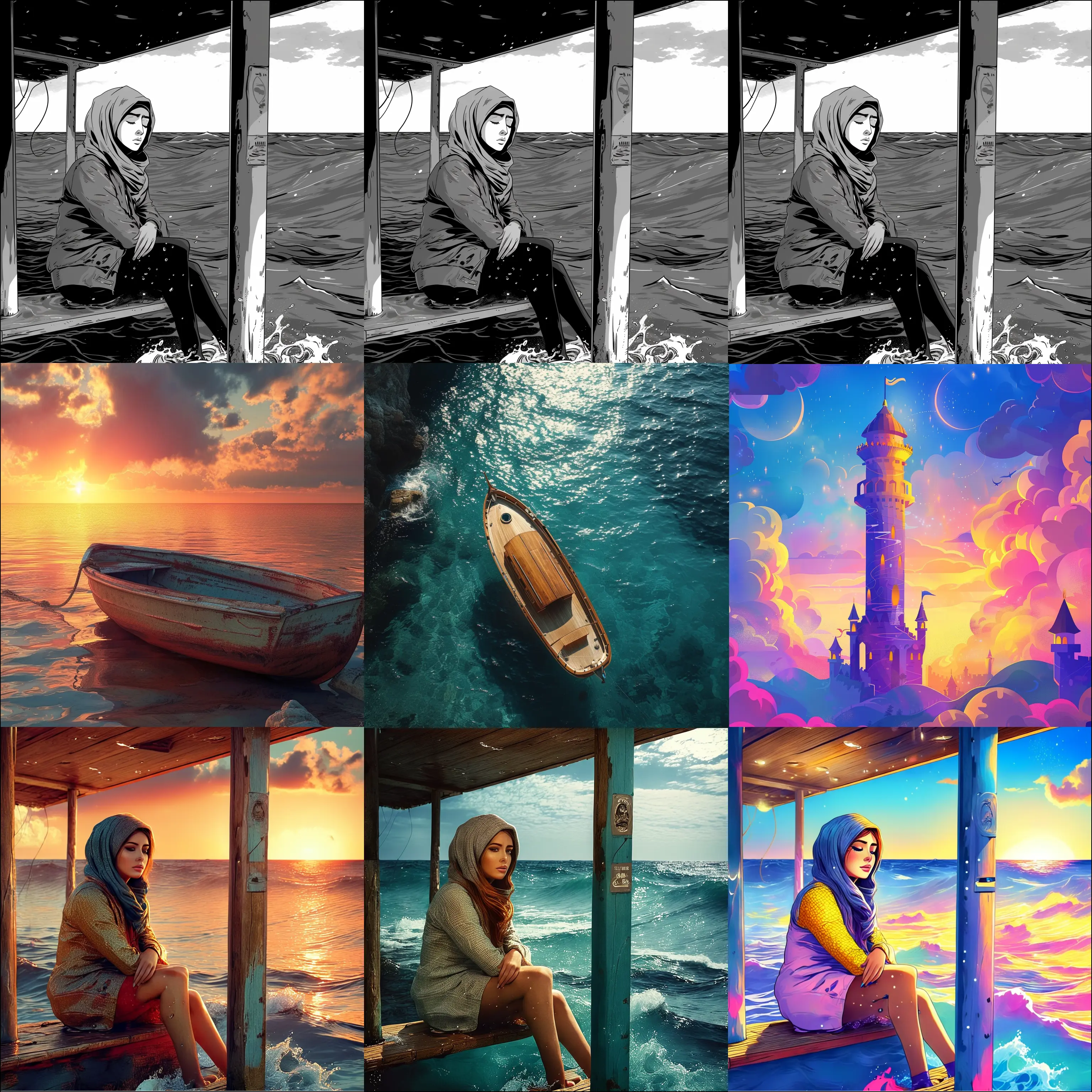ComfyUI Node: Human Garment Inpainting
MagicClothing_Inpainting
CategoryMagicClothing
FrankChieng (Account age: 725days) Extension
ComfyUI_MagicClothing Latest Updated
2024-09-04 Github Stars
0.56K
How to Install ComfyUI_MagicClothing
Install this extension via the ComfyUI Manager by searching for ComfyUI_MagicClothing- 1. Click the Manager button in the main menu
- 2. Select Custom Nodes Manager button
- 3. Enter ComfyUI_MagicClothing in the search bar
Visit ComfyUI Online for ready-to-use ComfyUI environment
- Free trial available
- 16GB VRAM to 80GB VRAM GPU machines
- 400+ preloaded models/nodes
- Freedom to upload custom models/nodes
- 200+ ready-to-run workflows
- 100% private workspace with up to 200GB storage
- Dedicated Support
Human Garment Inpainting Description
Enhance and modify garments in images seamlessly using advanced inpainting techniques for digital clothing design refinement.
Human Garment Inpainting:
MagicClothing_Inpainting is a specialized node designed to enhance and modify garments in images through inpainting techniques. This node allows you to seamlessly fill in or alter parts of a garment in an image, making it particularly useful for tasks such as repairing damaged areas, changing garment designs, or adding new elements to existing clothing. By leveraging advanced inpainting algorithms, MagicClothing_Inpainting ensures that the modifications blend naturally with the surrounding areas, maintaining the overall aesthetic and coherence of the image. This node is ideal for AI artists looking to refine their digital clothing designs or experiment with new styles without starting from scratch.
Human Garment Inpainting Input Parameters:
cloth_image
This parameter represents the image of the garment that you want to inpaint. It is the primary input for the inpainting process, and its quality and resolution will directly impact the final output. Ensure that the image is clear and well-defined to achieve the best results.
cloth_mask_image
This optional parameter is a mask image that indicates the areas of the garment to be inpainted. The mask should be a grayscale image where the regions to be modified are highlighted. If not provided, the entire garment image will be considered for inpainting. The mask helps in precisely targeting specific areas for modification.
num_images_per_prompt
This parameter defines the number of inpainted images to generate per prompt. It allows you to create multiple variations of the inpainted garment, providing a range of options to choose from. The default value is 4, but you can adjust it based on your needs.
seed
The seed parameter is used to initialize the random number generator for the inpainting process. By setting a specific seed value, you can ensure reproducibility of the results. The default value is -1, which means a random seed will be used.
cloth_guidance_scale
This parameter controls the influence of the guidance on the inpainting process. A higher value will make the inpainting more closely follow the guidance, while a lower value will allow for more creative freedom. The default value is 2.5.
num_inference_steps
This parameter specifies the number of inference steps to be taken during the inpainting process. More steps can lead to higher quality results but will also increase the computation time. The default value is 20.
height
This parameter sets the height of the output image. The default value is 512 pixels. Adjusting this value can help match the output image size to your specific requirements.
width
This parameter sets the width of the output image. The default value is 384 pixels. Similar to the height parameter, adjusting this value can help achieve the desired output image dimensions.
Human Garment Inpainting Output Parameters:
inpainted_image
The inpainted_image parameter is the primary output of the node. It contains the modified garment image with the inpainting applied. This image will reflect the changes specified by the input parameters and will blend seamlessly with the original garment.
Human Garment Inpainting Usage Tips:
- Ensure that the cloth_image is of high quality and well-lit to achieve the best inpainting results.
- Use a detailed cloth_mask_image to precisely control the areas to be inpainted, especially when making specific modifications.
- Experiment with different cloth_guidance_scale values to find the right balance between adherence to guidance and creative freedom.
- Adjust the num_inference_steps parameter to improve the quality of the inpainting, especially for complex modifications.
Human Garment Inpainting Common Errors and Solutions:
"image and image_mask must have the same image size"
- Explanation: This error occurs when the dimensions of the cloth_image and cloth_mask_image do not match.
- Solution: Ensure that both the cloth_image and cloth_mask_image have the same width and height before inputting them into the node.
"Invalid seed value"
- Explanation: This error occurs when the seed parameter is set to an invalid value.
- Solution: Use a valid integer value for the seed parameter, or leave it at the default value of -1 for a random seed.
"Insufficient memory for the specified image dimensions"
- Explanation: This error occurs when the specified height and width parameters result in an image size that exceeds the available memory.
- Solution: Reduce the height and width values to fit within the available memory limits of your system.
Human Garment Inpainting Related Nodes
RunComfy is the premier ComfyUI platform, offering ComfyUI online environment and services, along with ComfyUI workflows featuring stunning visuals. RunComfy also provides AI Playground, enabling artists to harness the latest AI tools to create incredible art.

